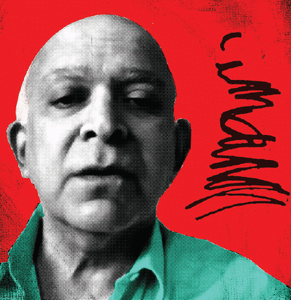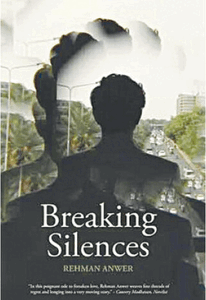The five Sanskrit fables, Panchatantra — Panchtantar in popular Urdu vocalisation — are universally known. I have already written about this supreme classic in a somewhat detailed exposition on these very pages in Dawn.
Dating from the third century BCE — if not earlier — the vicissitudes of this set of originally five animal tales are astounding. Indeed, in terms of its global transmission, Panchatantra seems to be unique in world literature, for it knows no linguistic or cultural or political boundaries and flows with its tributaries all over the East and the West.
Already, in the Middle Ages before the year 1600, it had been rendered into classical Greek and Latin and thereafter into Spanish, German, Italian and, of course, into English, besides other European languages. And more, not to speak here of Iran and India, it had reached East Asia in the cultural milieu of China, flowing South as far as the Indonesian island of Java.
Experts tell us that there are at least as many as 200 versions of the text in more than 50 languages of the world. Intriguingly, the redoubtable Firdowsi, too, in his Shahnama related a symbolic legend about the fable and, indeed, we have its Urdu translations too, one of them by the famous fiction writer of our own times, Intizar Husain. This is just mind-boggling.
Experts tell us there are at least 200 versions of the text in more than 50 languages. However, standard accounts of the fable’s reception and appropriations fail to bring into a clear perspective the historical fact that the transmission of Panchatantra largely radiates forth, not from its Sanskrit original, but from its Arabic adaptation.
And yet, there is one decisive feature of the fable’s global journey that is generally glossed over in standard accounts — this suppression, like many other truncated postcolonial narratives, has thrown into a veil of obscurity some highly revealing aspects not only of cross-cultural transmission of ideas, but also of world literary history.
And one may be so bold as to observe that there may well be a sinister dimension of this obscuring, too, for it seems to betray a cultural prejudice of a typical Orientalist kind, denying credit where it is due, being too Eurocentric and thereby closing up fruitful historical questions.
The standard accounts of the fable’s reception and appropriations all over the world fail to bring into a clear perspective the historical fact that the transmission of Panchatantra largely radiates forth, not from its Sanskrit original, but from its Arabic adaptation, named after the Arabicised appellations of the two jackals who are the main characters of the Indian fable: “Kartaka” [the horribly howling] and “Damnaka” [the Victor], which in Arabic became the famous “Kalila” and “Dimna.”
Yes, it is the Kalila wa Dimna [Kalila and Dimna] that serves as the fountainhead of the European transmission of the fable. Indeed, it is an interesting complexity of human intellectual history that a text or a set of ideas originating in one cultural milieu is sometimes preserved and spread through another cultural milieu. One recalls, for example, that there exist many classical Greek works known only through their Arabic renderings, the original Greek text having been lost.
Conversely, we have many classical Arabic writings that have been preserved not in Arabic, but only in Latin and, sometimes, only in Hebrew. What we have here are instances of the ironic complexities of fascinating cultural linkages — indelible linkages breaking through human-made territorial boundaries, a kind of cross-fertilisation whereby a migrant text or idea gets a new lease on life in a soil other than its soil of birth.

And a case rather analogous to the Panchatantra is that of the transmission of ‘Arabic’ numerals — namely, the place-value-based numerals in which we ordinarily denote quantities today. Arabic numerals are, in fact, Indian numerals, but they are so called since they were introduced to the Latin West, again, not from the original Sanskrit, but through the Latin translation of Al Khwarizmi’s Book of Indian Computation.
Note that the word ‘algorithm’ or ‘algorism’ is a Latin corruption of the name of this monumental inventor of algebra who worked in Baghdad in the ninth century. And here is another glowing irony of world culture: Al Khwarizmi’s Indian Computation is available only in Latin. No, we do not have the Arabic original.
The Kalila wa Dimna is a reconfigured adaptation of a Pahlavi version of the Panchatantra, rendered into delightfully flowing Arabic by a Zoroastrian convert to Islam, Ibn al Maqaffa. It might be added that Ibn al Maqaffa, a Persian, was a master of Arabic prose, hailed until this day to be an unparalleled literary virtuoso.
Perhaps one explanation of the luxuriant fecundity of the Kalila is the lucidity of its prose that hides its power, like the undercurrents of a gently flowing river. What is historically significant, the original fable has five tales, as its title ‘Five Treatises’ announces, but Ibn al Muqaffa inserts two more stories in the text. To repeat, it is this version with seven tales that makes its way to Europe.
Once the convoluted transmission lines of Panchatantra are thrown into a critical perspective, a decisive historical question is opened up.
From the ninth or 10th century’s clandestine Brethren of Purity through 12th century Spain’s Ibn Tufail, why is it, one wonders, that there flourished a rich and highly productive literary tradition of animal tales in the Islamicate world, a tradition we see from the early Abbasid era down to its reflections in present times in the poetry of Allama Muhammad Iqbal?
But this calls for another study.
The columnist chairs the Arts and Humanities Review Panel of the Pakistan Higher Education Commission
Published in Dawn, Books & Authors, January 29th, 2023


































